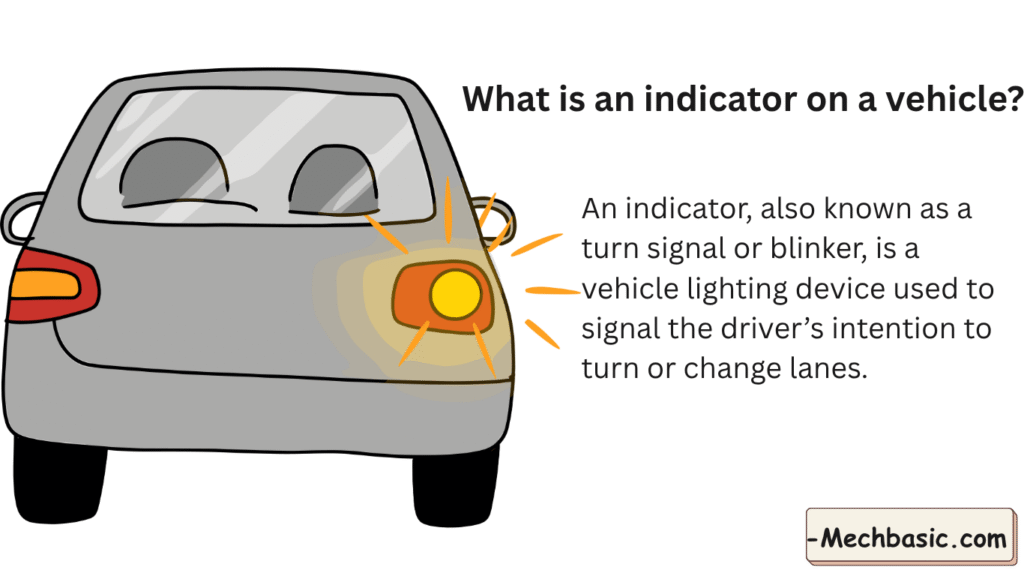Let’s go into what an indicator is on a vehicle in detail:

1. Definition of an Indicator
An indicator, also known as a turn signal or blinker, is a vehicle lighting device used to signal the driver’s intention to turn or change lanes.
- It alerts other road users, pedestrians, and cyclists to your intended movement.
- It is an essential safety feature and legally required on all vehicles.
2. Purpose of Vehicle Indicators
- Signal Intentions: Inform others when you are turning, changing lanes, or merging.
- Prevent Accidents: Reduce the risk of collisions by giving other drivers time to react.
- Legal Requirement: Driving without using indicators can result in fines or penalties.
3. Components of an Indicator System
| Component | Function |
|---|---|
| Indicator Bulb / LED | Emits flashing light, usually amber (yellow) |
| Flasher Relay | Controls the blinking rate of the indicator light |
| Turn Signal Switch / Stalk | Activated by the driver to select left or right turn |
| Wiring & Fuse | Provides power and protects the circuit |
4. Types of Indicators
A. By Position on Vehicle
- Front Indicators: Usually amber lights integrated with headlights.
- Rear Indicators: Amber or red lights integrated with tail light assembly.
- Side Indicators / Repeaters: Mounted on fenders or side mirrors for better visibility from the side.
B. By Technology
- Incandescent Bulbs: Traditional, filament-based.
- LED Indicators: Brighter, energy-efficient, and have faster response time.
- Sequential Indicators: Modern feature where lights illuminate in a sequence, often seen in high-end cars.
5. How Indicators Work
- Driver activates turn signal stalk → selects left or right.
- Flasher relay receives power → causes the bulb/LED to blink at a fixed rate (~60–120 flashes per minute).
- Front, rear, and side indicators blink simultaneously to signal direction.
- Canceling mechanism automatically turns off the signal after completing the turn in most modern vehicles.
6. Indicator Rules for Safe Driving
- Always activate your indicator before turning or changing lanes (ideally 3–5 seconds or 30 meters in advance).
- Do not forget to cancel after completing the maneuver.
- Use hazard lights when stopping unexpectedly or in emergency situations.
- Ensure all indicator bulbs are functional — malfunctioning indicators are a safety hazard and illegal.
7. Common Problems With Indicators
- Burnt-out bulbs
- Blown fuse
- Faulty flasher relay
- Wiring issues or loose connections
- Stalk/switch malfunction
✅ Summary
- Indicator = turn signal / blinker.
- Purpose: Signal turns, lane changes, or hazards.
- Color: Usually amber (yellow), red in some rear applications.
- Operation: Activated by stalk, flashes via flasher relay, must be visible from front, rear, and sides.
💡 Tip:
Indicators are critical for accident prevention. Always check them during pre-driving vehicle inspections.
Other courses:



